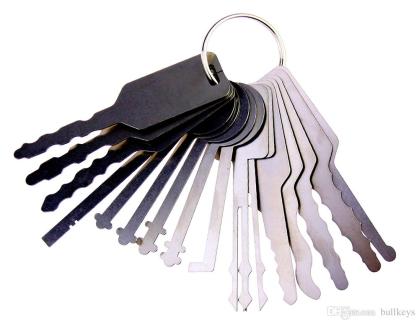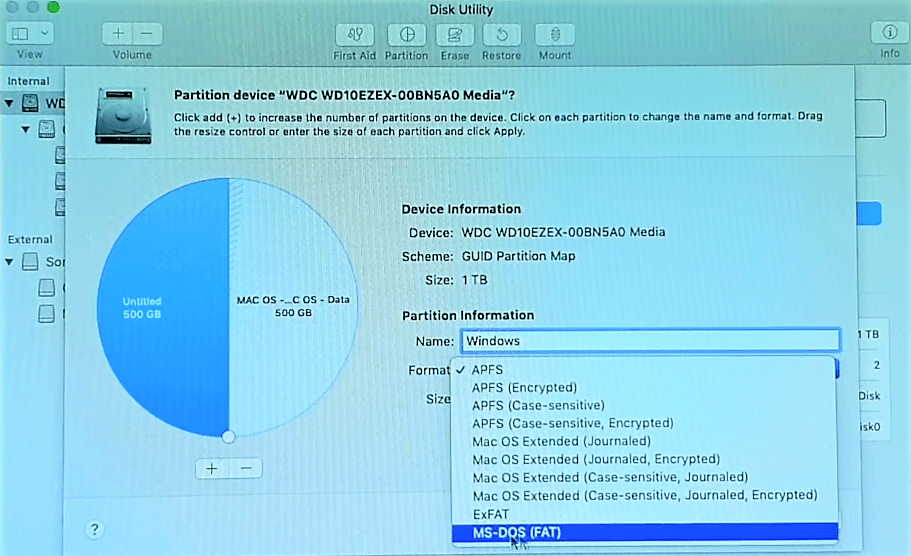A master key operates a set of several locks. Usually, there is nothing special about the key itself, but rather the locks into which it will fit. These master-keyed locks are configured to operate with two, or more, different keys: one specific to each lock (the change key), which cannot operate any of the others in the set, and the master key, which operates all the locks in the set. Locks that have master keys have a second set of the mechanism used to operate them that is identical to all of the others in the set of locks. For example, master keyed pin tumbler locks often have two shear points at each pin position, one for the change key and one for the master key. A far more secure (and more expensive) system has two cylinders in each lock, one for the change key and one for the master key.
A master key system is a key plan whereby selected keys can open a number of pre-defined doors. It helps maintain better control, saves key replacement costs and is convenient, as there are a lower number of keys in circulation. It also provides quick access to all rooms within the premises, e.g. For security staff and management personnel. Master keying is the process of making a lock cylinder work with 2 or more separate keys. By separate, we mean keys that are cut differently, not duplicate keys. An ideal example of this is an office door within your commercial building. If master keying must be used, limit the scope of a successful attack by separating different functions into different master systems. For example, instead of having a single master system for an entire organization, use separate master systems for different work groups, floors, etc.
Master keyed lock systems generally reduce overall security.[1] The fact that some pin chambers have two shear points allows for more options when picking and it also allows for more keys to operate. For example, a standard 6 pin cylinder, which was designed to be operated by only one key, can be operated by up to 26 = 64 keys if there are two shear points in each chamber.
Larger organizations, with more complex systems, may have several levels of master keys, where the top level key works in all of the locks in the system. To visualize this, it can be thought of as a hierarchical chart, or a tree.
A practical attack exists to create a working master key for an entire system given only access to a single master-keyed lock, its associated change key, a supply of appropriate key blanks, and the ability to cut new keys.[1]
Locksmiths may also determine cuts for a replacement master key, when given several different key examples from a given system.

Master Keying Guide
Maison key system[edit]
A Maison key system is a keying system that permits a lock to be opened with a number of unique, individual keys.[2] Maison key systems are often found in apartment building common areas, such as main entrance or a laundry room where individual residents can use their own apartment key to access these areas. Unlike a master key system, where each individual lock has one individual operating key and one common master key, Maison lock is designed to be operated by every key within the system.
Because of the inherent lack of security in the Maison key system, some jurisdictions prohibit the use of Maison key systems in apartment and condominium complexes. Mac internet security free. In such locations, access is usually facilitated by either a high-security, key-controlled system or the use of electronic access control systems such as a card reader.
See also[edit]
References[edit]
- ^ abBlaze, Matt (March 2003). 'Rights amplification in master-keyed mechanical locks'(PDF). IEEE Security & Privacy. 99 (2): 24–32.
- ^'The Maison Key System and Its Uses'. www.altonalocksmiths.com.au. Retrieved 2017-01-28.
A master key system is a key plan whereby selected keys can open a number of pre-defined doors. It helps maintain better control, saves key replacement costs and is convenient, as there are a lower number of keys in circulation. It also provides quick access to all rooms within the premises, e.g. for security staff and management personnel. This is not only convenient but can save lives in case of emergency.
In the above example, the ‘Master Key’ would open all doors and lock types in the property and is held by the caretaker. The Sub-Master A opens the main entrance and all the locks on the ground floor, and is held by the manager of the company that occupies that floor. The same applies to Sub-Master B.
In addition, each employee has one key that opens the main entrance, their own office door and their filing cabinets. These keys work with different types of lock, e.g. door locks, cabinet locks, padlocks, etc., as long as the cylinder inside them is of the same model.
Product details

dormakaba master key systems are among the most secure in the world. Here is what you get with a dormakaba master key system:
- A system designed specifically for your needs, regardless of the type of building, e.g. residential, commercial, small, large, complex, etc.
- A tailor-made key plan including a logical key and cylinder numbering system that is flexible enough to last.
- A flexible master key system, able to grow and change with your organisation over the long term.
- Reduced number of keys to enhance control and lower the cost of your key replacement.
- Integration into your access control system if required, so you have an overview in a single tool of mechanical keys as well as electronic badges.
- Key clips in many different colours (depending on model), so you can allocate one colour per zone or floor, which is a great organisational help.

A master key plan is the essence of modern mechanical access control. It is recommended for all types of building, from residential houses and apartment blocks through to medium-sized or large organisations with a hundred keys or more. This becomes particularly important in the following cases:
Master Keying Guide Meaning
- Keeping control of who holds which key to which room for security reasons.
- To eliminate the need to carry too many keys, i.e. convenience.
- For safety reasons, e.g. when emergency services need quick, round-the-clock access to all rooms without having to search for the right key, e.g. in nursing homes, aged care facilities or in student accommodations.
Master Keying Guide
Product downloads

